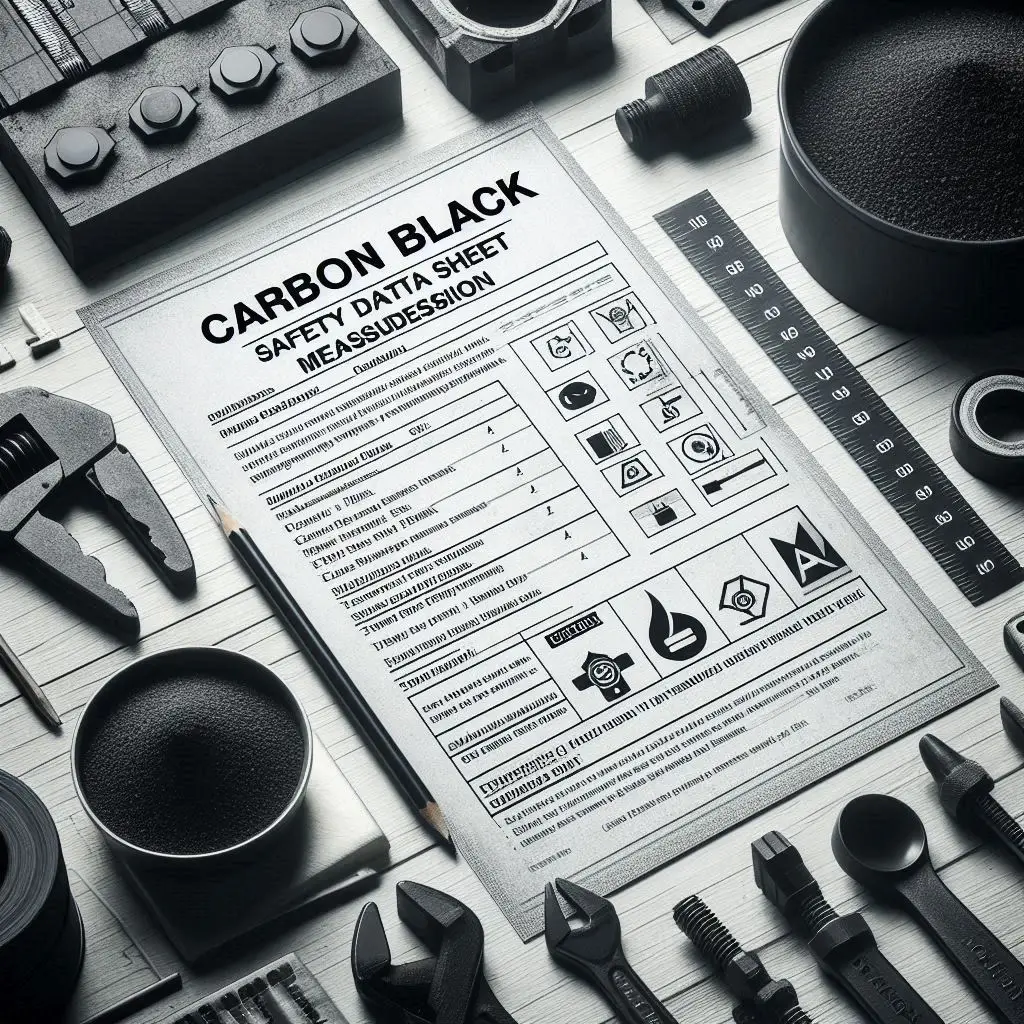
Carbon Black Safety Data Sheet Measures
Introduction
Carbon black is a widely used substance in various industries such as rubber production, coatings, inks, and plastics. Despite its versatility and benefits, carbon black can pose serious health and environmental risks if not handled with care. To address these risks, the Carbon Black Safety Data Sheet (SDS) provides essential guidelines on how to manage the substance safely. This article will explore the key components of the Carbon Black SDS, highlighting the safety measures that should be followed to ensure a safe working environment and minimize the associated risks.
Carbon Black Safety Data Sheet
The Carbon Black Safety Data Sheet (SDS) serves as an essential reference document for managing the risks associated with carbon black. It provides crucial information about the substance, including its physical and chemical properties, potential health hazards, and safety precautions. Understanding the SDS is fundamental to ensuring that carbon black is used in a manner that safeguards human health and the environment.
Identification of the Substance: Carbon black is typically described as an amorphous black powder or pellet. It is an insoluble material, which does not dissolve in water or common organic solvents. The SDS contains specific details on the physical and chemical properties of carbon black, including its potential reactivity and associated risks.
Health Hazards: Exposure to high concentrations of carbon black dust can cause respiratory irritation and long-term conditions like pneumoconiosis, a type of lung disease. The SDS emphasizes the importance of using proper personal protective equipment (PPE) to minimize exposure, including respiratory protection to prevent inhaling harmful dust particles.
Safe Handling and Storage: The SDS provides detailed instructions on how to handle and store carbon black safely. It recommends using appropriate PPE, including respiratory protection, gloves, and safety goggles. It also stresses the importance of proper ventilation and the use of dust-suppression systems to reduce airborne particles. Carbon black should be stored in well-sealed containers, away from incompatible materials, and in a dry, well-ventilated area.
Emergency Measures: In case of accidental exposure or spills, the SDS outlines emergency response procedures. This includes instructions on first aid measures such as flushing the eyes or skin with water and seeking medical attention if necessary. It also describes how to control and clean up spills using absorbents to prevent contamination of the environment.
Disposal Considerations: Proper disposal of carbon black is essential to prevent environmental contamination. The SDS outlines methods for disposing of carbon black, such as recycling, incineration, or landfilling, ensuring compliance with local environmental regulations.
Carbon Black Safety Measures
While the SDS provides critical information on handling and safety, it is also essential to implement specific safety measures when working with carbon black. These measures help reduce risks, protect workers, and ensure compliance with safety regulations.
Personal Protective Equipment (PPE): Wearing the appropriate PPE is crucial when handling carbon black. This includes respirators or dust masks to prevent inhalation of harmful dust particles, safety glasses or goggles to protect the eyes, and gloves and coveralls to protect the skin from direct contact with the substance. PPE should be regularly maintained and replaced to ensure maximum protection.
Engineering Controls: To further reduce exposure, workplaces should install local exhaust ventilation systems. These systems help capture and remove carbon black particles from the air, preventing them from spreading and ensuring that workers are not exposed to harmful dust. By maintaining a clean, dust-free environment, these controls help protect both workers and the surrounding environment.
Safe Handling Practices: Following safe handling practices is vital for minimizing carbon black dust production. These include using dust-suppression technology such as vacuum systems or wetting agents. Additionally, workers should avoid using compressed air to clean surfaces exposed to carbon black, as this can disperse the dust into the air, creating additional health hazards.
Storage and Disposal: Proper storage of carbon black is critical for ensuring safety and maintaining the quality of the substance. Containers should be kept tightly sealed and stored in a dry, cool, well-ventilated area away from incompatible materials. When it comes to disposal, carbon black should be handled according to local waste management regulations to prevent environmental contamination.
Training and Awareness: Regular training and awareness programs are essential for educating workers about the risks associated with carbon black and the necessary safety precautions. Training should cover the correct handling methods, the use of PPE, emergency response procedures, and how to safely dispose of carbon black. Promoting a culture of safety through continuous education can significantly reduce accidents and health-related issues in the workplace.
Conclusion
In conclusion, carbon black is an essential material in various industries, but it must be handled with care to minimize health and environmental risks. By adhering to the Carbon Black Safety Data Sheet and following the recommended safety measures, workers can ensure a safer working environment and reduce potential exposure to harmful substances. Proper PPE, engineering controls, safe handling practices, and ongoing training are key to mitigating the risks associated with carbon black. Staying updated on the latest safety information and regulations is essential for maintaining a safe and responsible workplace.

